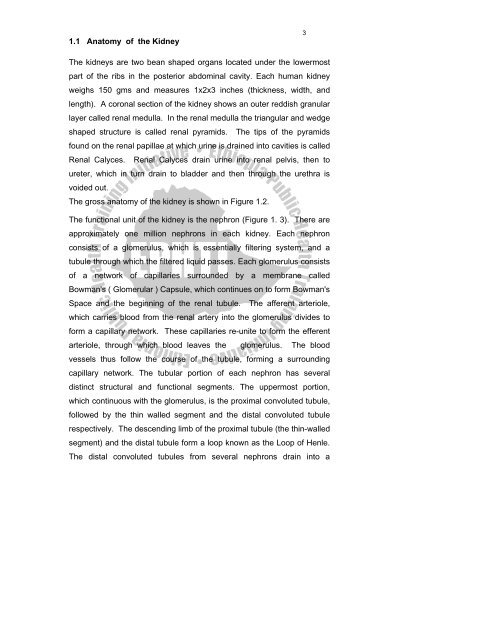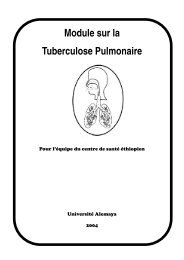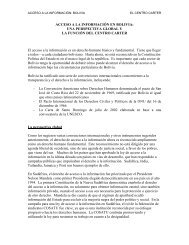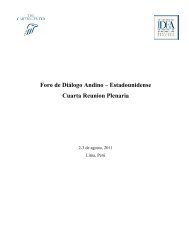Urinalysis - The Carter Center
Urinalysis - The Carter Center
Urinalysis - The Carter Center
Create successful ePaper yourself
Turn your PDF publications into a flip-book with our unique Google optimized e-Paper software.
1.1 Anatomy of the Kidney<br />
3<br />
<strong>The</strong> kidneys are two bean shaped organs located under the lowermost<br />
part of the ribs in the posterior abdominal cavity. Each human kidney<br />
weighs 150 gms and measures 1x2x3 inches (thickness, width, and<br />
length). A coronal section of the kidney shows an outer reddish granular<br />
layer called renal medulla. In the renal medulla the triangular and wedge<br />
shaped structure is called renal pyramids. <strong>The</strong> tips of the pyramids<br />
found on the renal papillae at which urine is drained into cavities is called<br />
Renal Calyces. Renal Calyces drain urine into renal pelvis, then to<br />
ureter, which in turn drain to bladder and then through the urethra is<br />
voided out.<br />
<strong>The</strong> gross anatomy of the kidney is shown in Figure 1.2.<br />
<strong>The</strong> functional unit of the kidney is the nephron (Figure 1. 3). <strong>The</strong>re are<br />
approximately one million nephrons in each kidney. Each nephron<br />
consists of a glomerulus, which is essentially filtering system, and a<br />
tubule through which the filtered liquid passes. Each glomerulus consists<br />
of a network of capillaries surrounded by a membrane called<br />
Bowman's ( Glomerular ) Capsule, which continues on to form Bowman's<br />
Space and the beginning of the renal tubule. <strong>The</strong> afferent arteriole,<br />
which carries blood from the renal artery into the glomerulus divides to<br />
form a capillary network. <strong>The</strong>se capillaries re-unite to form the efferent<br />
arteriole, through which blood leaves the glomerulus. <strong>The</strong> blood<br />
vessels thus follow the course of the tubule, forming a surrounding<br />
capillary network. <strong>The</strong> tubular portion of each nephron has several<br />
distinct structural and functional segments. <strong>The</strong> uppermost portion,<br />
which continuous with the glomerulus, is the proximal convoluted tubule,<br />
followed by the thin walled segment and the distal convoluted tubule<br />
respectively. <strong>The</strong> descending limb of the proximal tubule (the thin-walled<br />
segment) and the distal tubule form a loop known as the Loop of Henle.<br />
<strong>The</strong> distal convoluted tubules from several nephrons drain into a
















